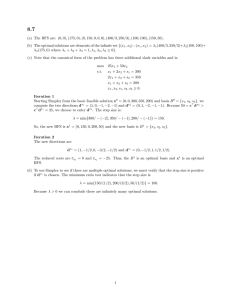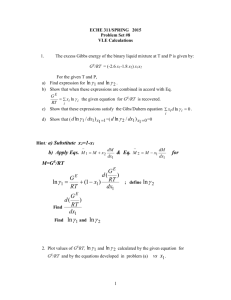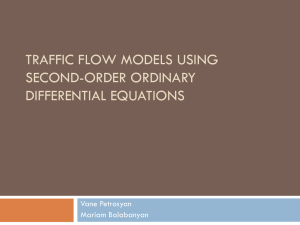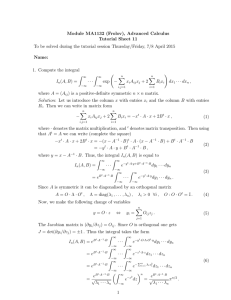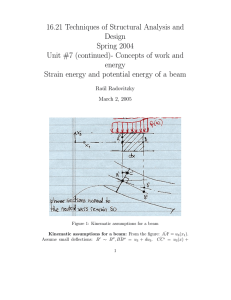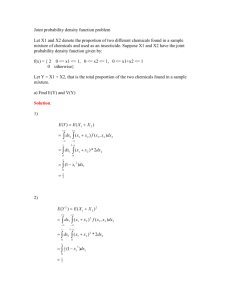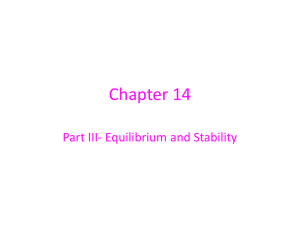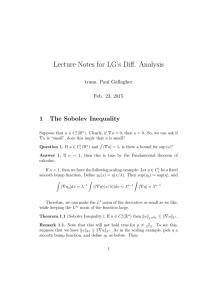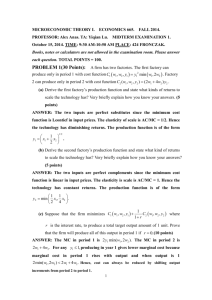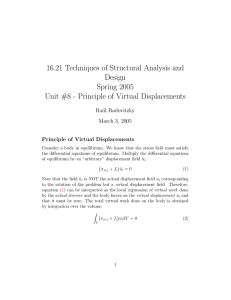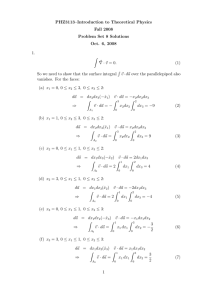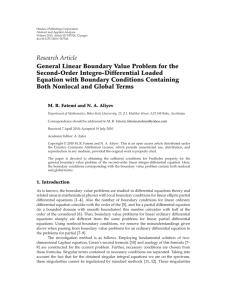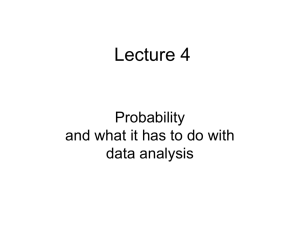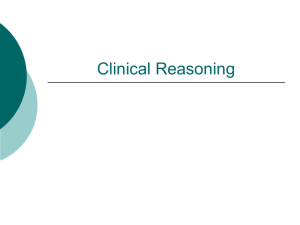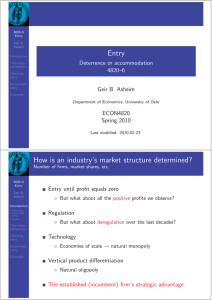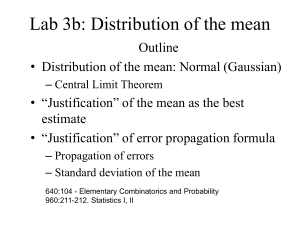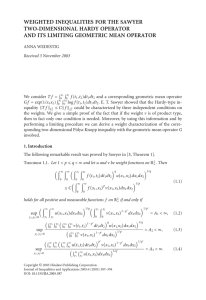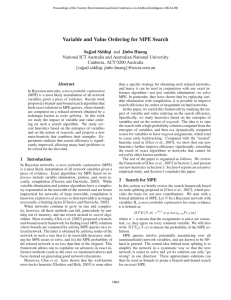Remote Measurement
advertisement
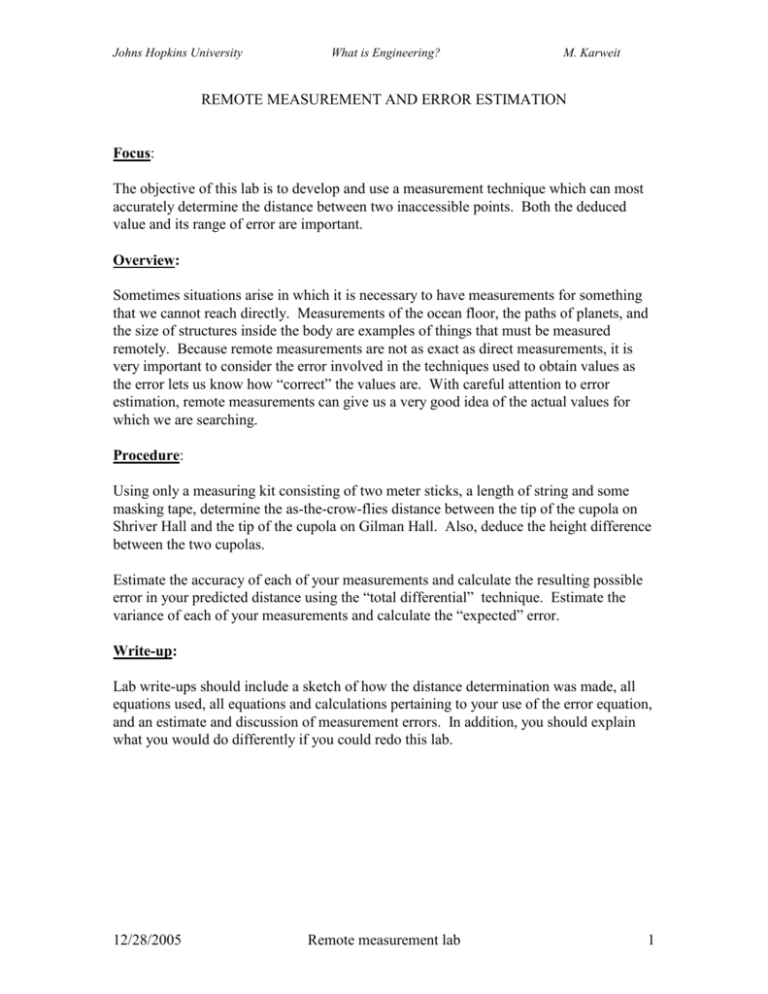
Johns Hopkins University What is Engineering? M. Karweit REMOTE MEASUREMENT AND ERROR ESTIMATION Focus: The objective of this lab is to develop and use a measurement technique which can most accurately determine the distance between two inaccessible points. Both the deduced value and its range of error are important. Overview: Sometimes situations arise in which it is necessary to have measurements for something that we cannot reach directly. Measurements of the ocean floor, the paths of planets, and the size of structures inside the body are examples of things that must be measured remotely. Because remote measurements are not as exact as direct measurements, it is very important to consider the error involved in the techniques used to obtain values as the error lets us know how “correct” the values are. With careful attention to error estimation, remote measurements can give us a very good idea of the actual values for which we are searching. Procedure: Using only a measuring kit consisting of two meter sticks, a length of string and some masking tape, determine the as-the-crow-flies distance between the tip of the cupola on Shriver Hall and the tip of the cupola on Gilman Hall. Also, deduce the height difference between the two cupolas. Estimate the accuracy of each of your measurements and calculate the resulting possible error in your predicted distance using the “total differential” technique. Estimate the variance of each of your measurements and calculate the “expected” error. Write-up: Lab write-ups should include a sketch of how the distance determination was made, all equations used, all equations and calculations pertaining to your use of the error equation, and an estimate and discussion of measurement errors. In addition, you should explain what you would do differently if you could redo this lab. 12/28/2005 Remote measurement lab 1 Johns Hopkins University What is Engineering? M. Karweit THE CALCULUS OF ERRORS Suppose you want to calculate the volume of a structure that consists of a cone resting upon a rectangular parallelopiped. The total volume of this structure is: 1 V R 2 H c LWH . 3 You will not measure V directly, but rather you will calculate V by taking measurements of R, Hc, L, W, and H. But suppose these measurements are not perfectly accurate. So the question is how much error will you induce in your calculation of V by using inaccurate values for the measured variables. If each measurement is in error by its own , then the calculated volume would consist of the true volume V plus an error V. The relation between the error-borne measurements and the resulting calculated volume would be: 1 V V ( R R) 2 ( Hc Hc ) ( L L)(W W )( H H ) . 3 Expanding this equation, then subtracting out the equation for V, one obtains 1 V [2 RH c R R 2 H c H c ( R) 2 2 RRH c H c ( R) 2 ] 3 + HWL HLW LWH HLW LHW WHL LWH . If Hc, R, L, W, and H are all small, then terms containing of two or more of these s will be much smaller than terms containing only a single . Consequently, if we ignore these smaller terms, V can be approximated as 1 V (2 RH c R R 2 H c ) LWH LHW WHL . 3 Thus, if we have some estimate for the errors in our measurements, we can use the above expression to evaluate the error in our calculated V. Another way of representing this error is by percentages. If the total volume V is separated into its constituent pieces V = Vc + Vp , where the subscripts c and p refer to the cone and parellelopiped, respectively, then the above equation can be rewritten as V V R H c H W L Vc (2 ) Vp ( ). V R Hc H W L This equation shows that percentage errors in the parallelepiped measurements, e.g., H , are linearly H additive with weight Vp, whereas a percentage error in the measurement of R is doubly additive with weight Vc. This error calculation can be presented more formally as follows: If F is a differentiable function depending on n variables x1 , x 2 , , x n , then infinitesimal variations in F are determined by infinitesimal variations in the xis as: dF ( x1 , x 2 ,..., x n ) F F F dx1 dx 2 dx x1 x2 xn n dF is called the “total differential” . For additional references, look under “total differential” or “calculus of errors” in elementary calculus books. 12/28/2005 Remote measurement lab 2 Johns Hopkins University What is Engineering? M. Karweit dF ( x1 , x 2 ,..., x n ) is the actual error in F associated with errors in a single set of measurements with errors dx i . If all our measurement errors have the same sign, then dF ( x1 , x 2 ,..., x n ) is the maximum error we can have. But measurement errors are typically not all of the same sign. So we can ask the question what is the typically error we might expect in F. To answer that question, we must make three dx i = 0 (i.e., the errors are unbiased), 2) the errors dx i do not depend on the values of the measurements x i , and assumptions: if we were to carry out the measurements many times, 1) the average value of each 3) the correlations between the measurement errors is zero. In a very compact notation this last assumption dx , dx j 0 for i j. Finally, if i = j, then we can write dx ,2 ,2 , i.e., the can be expressed as variance of the ith measurement error. The “ squared error” of dF ( x1 , x 2 ,..., x n ) is: 2 2 2 F F F dx n 2 dx1 2 dx 2 2 ... dF x1 x 2 x n F F F F F F F F dx1 dx 2 dx1 dx 3 ... dx1 dx 4 ... dx n 1 dx n x1 x 2 x1 x 3 x1 x 4 x n 1 x n 2 Now consider the “mean squared error”. This is written as 2 F F dx1 2 dF x1 x 2 2 2 F dx 2 2 ... x n 2 dx n 2 F F F F F F F F dx1 dx 2 dx1 dx 3 ... dx1 dx 4 ... dx n 1 dx n x1 x 2 x1 x 3 x1 x 4 x n 1 x n Since we have assumed that the measurement errors do not depend on the values of the measurements themselves, we can separate the averaging of each term into two parts as 2 2 2 F F F dx n 2 dx1 2 dx 2 2 ... dF x1 x 2 x n F F F F F F F F dx1 dx 2 dx1 dx 3 ... dx1 dx 4 ... dx n 1 dx n x1 x 2 x1 x 3 x1 x 4 x n 1 x n 2 Because dx , dx j 0 for i j , all the terms on the second line disappear and we end up with 2 F F 1 2 dF x1 x 2 2 2 F 2 2 ... x n 2 n 2 So, the “expected” or “root-mean-squared” error in F is 2 F F 1 2 dF x1 x 2 2 12/28/2005 2 F 2 2 ... x n 2 n 2 Remote measurement lab 3
